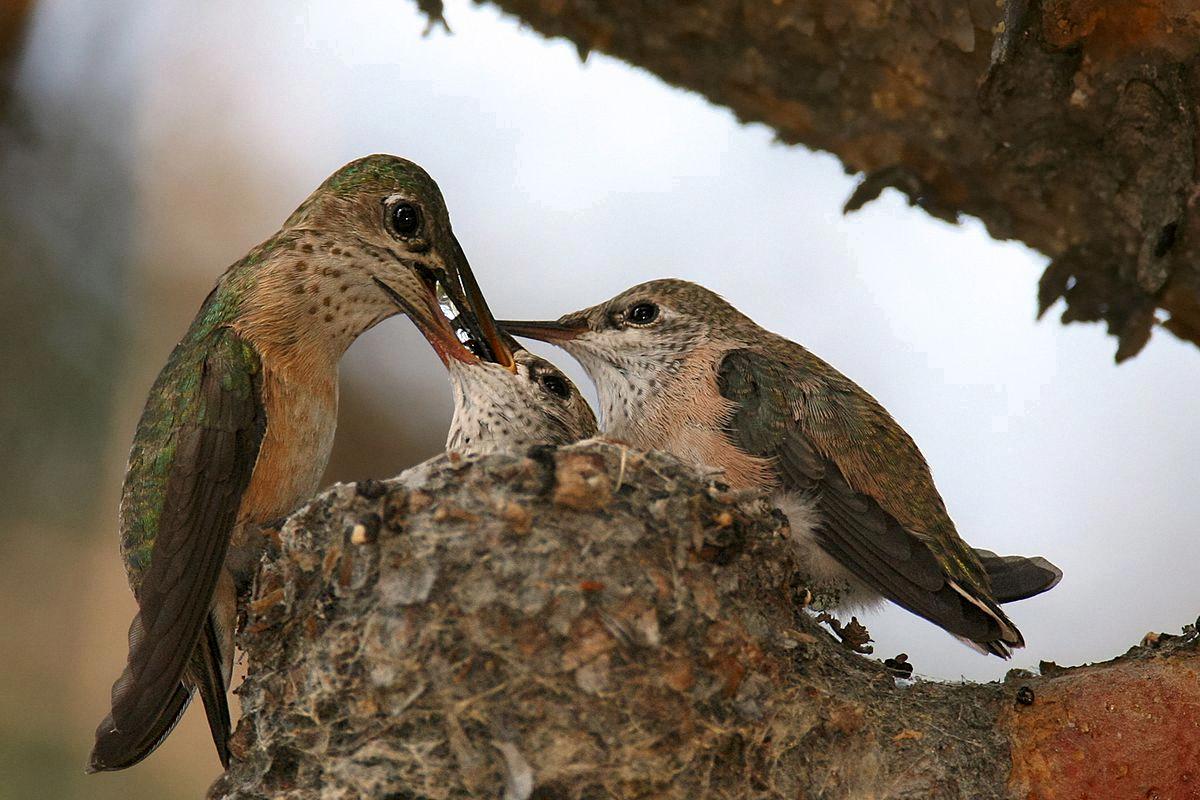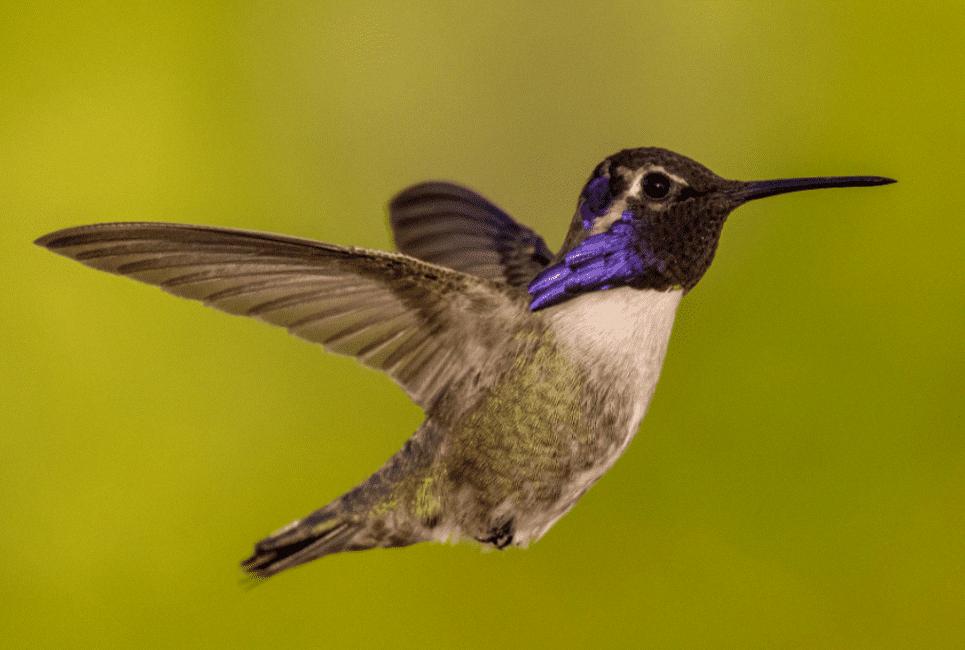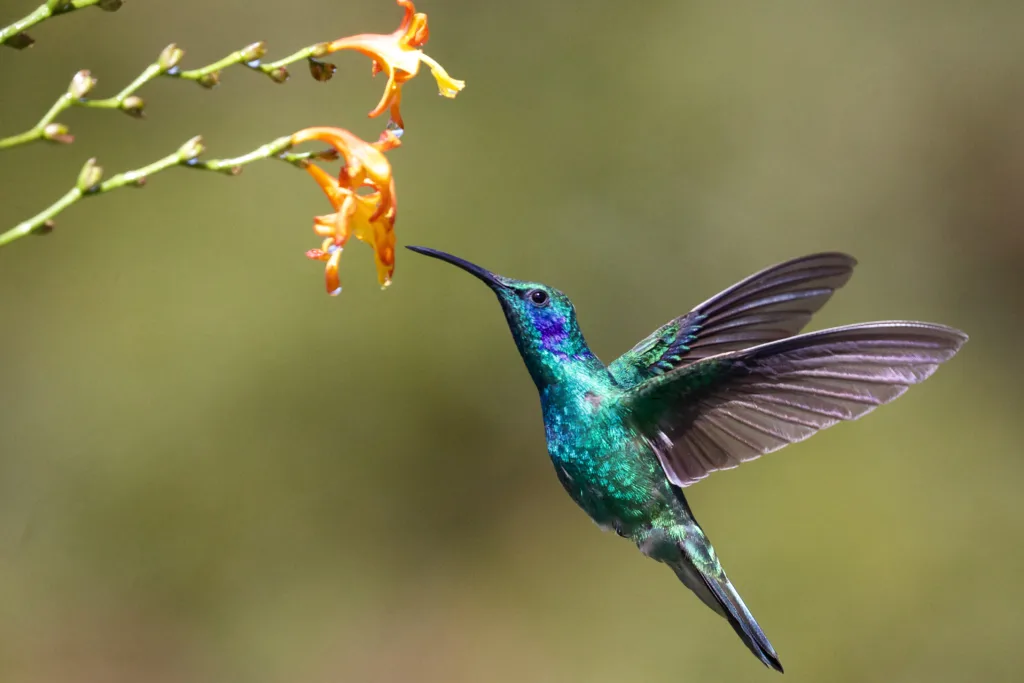Hummingbirds are fascinating and beautiful creatures that capture the attention of bird enthusiasts and nature lovers alike. These tiny creatures are known for their incredible speed and agility, as well as their striking colors and unique ability to hover in mid-air. But there is more to hummingbirds than meets the eye, including their mating habits.
So, do hummingbirds mate for life? The short answer is no. Unlike some bird species that mate for life, such as swans and eagles, hummingbirds are not monogamous. Instead, they engage in what is known as opportunistic mating, meaning they mate with multiple partners during their breeding season.
Hummingbirds typically breed between March and July, with mid-May being the height of the breeding season. During this time, male hummingbirds will perform elaborate courtship displays to attract females. These displays often involve hovering and darting around the female while making high-pitched chirping sounds. If the female is impressed, she will allow the male to mate with her.
While hummingbirds may not mate for life, they do exhibit some interesting behaviors when it cmes to mating. For example, male hummingbirds will often defend their territory and their chosen mate from other males. They may engage in aggressive displays, such as dive-bombing and chasing, to keep other males at bay.
Once a female has accepted a male’s advances, she will perch on a branch and wait for the male to mount her from behind. The actual act of mating only takes a few seconds, after which the male will fly off in search of another mate.
Despite their fleeting relationships, hummingbirds are still fascinating creatures with much to offer in terms of beauty and behavior. If you are lucky enough to spot one of these tiny birds in your yard or garden, take a moment to appreciate their incredible speed and agility, and their unique mating habits.
Do Hummingbirds Return to the Same House Yearly?
Yes, hummingbirds have a remarkable ability to remember and return to the same bird feeders, gardens, and yards each year. This behavior is knwn as site fidelity, which means that they will come back to the same location where they had previously found food, shelter, and nesting opportunities. Researchers have found that some hummingbirds even have a well-defined territory of a few hundred square meters, which they defend and visit regularly throughout the breeding season. The reason why hummingbirds return to the same house every year is not entirely clear, but it may be related to their need for a reliable food source, their preference for familiar surroundings, or their innate navigation skills. In any case, it’s always a joy to see these tiny birds return and bring their vibrant colors and energetic flights to our gardens and backyards year after year.

Source: en.wikipedia.org
Frequency of Hummingbird Mating
Hummingbirds are known to be prolific breeders, and the ruby-throated hummingbird, which is the most common species in North America, can mate up to three times in a single breeding season. These tiny birds breed betwen the months of March and July, with the peak breeding season occurring in mid-May. During this time, males perform elaborate courtship displays to attract females and mate with them. After mating, the female builds a small cup-shaped nest made of soft plant fibers and spider silk, where she lays one or two eggs. The female alone incubates the eggs for about two weeks, after which the chicks hatch and are fed a diet of nectar and insects by both parents. Once the chicks fledge, the parents may mate again and start the process over, allowing them to raise multiple broods in a single breeding season.
Do Hummingbirds Recognize Humans?
Yes, hummingbirds do recognize humans. They have excellent memories and are observant of their environment, which includes who and what is in it. Hummingbirds can recognize the people who feed them and keep their feeders stocked with nectar. They remember the locations of these feeders and will return to them regularly. Hummingbirds are also known to form strong bonds with humans who regularly interact with them. They can even learn to distinguish between individual humans based on their physical appearance or behavior. Overall, hummingbirds are intelligent and perceptive creatures that are capable of recognizing and remembering humans.
Mating Habits of Hummingbirds
Contrary to popular belief, hummingbirds do not mate in midair. While they are incredibly agile and can hover in one spot for long periods of time, their legs are not designed for walking or bouncing. However, hummingbirds are capable of perching on branches, which is where they copulate. After a male hummingbird has successfully courted a female and she has accepted him as a mate, the female will perch on a branch and wait for the male to mount her from behind. So, whle hummingbirds are skilled in the air, their mating rituals take place on solid ground, or in this case, on a sturdy branch.
Where Do Hummingbirds Spend the Night?
Hummingbirds are known to find a secure and sheltered spot to rest on for the night. They usually look for a twig or a branch that is protected from the wind and other elements. This behavior helps them conserve energy and avoid predators while they rest. Interestingly, during the winter season, hummingbirds can enter into a state known as torpor, which is similar to deep sleep. This behavior is often observed on cold nights, but smetimes they may enter into torpor during the day as well. In summary, hummingbirds look for a safe and secure spot to rest at night and may enter into torpor during the winter season.

Source: birdinginsider.com
Do Hummingbirds Sleep in the Same Place Every Night?
Hummingbirds are known for their unique sleeping habits. While they do sleep at night, they don’t sleep in the same way that other birds do. Hummingbirds enter into a state of torpor during the night, which is a type of sleep that involves slowing down their metabolism and conserving energy.
As for whether hummingbirds sleep in the same place every night, it’s not a hard and fast rule. While they may have a preferred sleeping spot, they are known to switch things up from time to time. It’s not uncommon to see several hummingbirds sleeping in the same tree or bush, sometimes even on the same branch. However, they tend to be spaced out rther than huddled together like some other bird species. So while they may not have a set sleeping spot, they do have their preferred areas and will often return to them.
The Dangers of Hummingbirds Flying Into Windows
Hummingbirds are known for their fast and agile flight, but unfortunately, this also makes them prone to colliding with windows. The primary reason why hummingbirds fly into windows is because they mistake the reflection of the sky or trees on the glass for an open space. Since these birds are accustomed to flying at high speeds, they may not have enough time to adjust their flight path when they encounter the window, leading to a collision. Additionally, hummingbirds have excellent eyesight, which alows them to see a wide range of colors and detect small movements. However, this also means that they may not be able to distinguish glass from open air, especially if the window is clean or the lighting conditions are bright. In summary, hummingbirds fly into windows because they are unable to differentiate between the reflection of the sky and an actual open space due to their high speed and excellent vision.
Identifying Male and Female Hummingbirds
To tell a male hummingbird from a female hummingbird, the most definitive feature is the gorget. The gorget is a patch of brightly colored feathers located around the throat of a hummingbird. Male hummingbirds have a gorget, while female hummingbirds do not. In addition to the gorget, male hummingbirds are typically more brightly colored than females. However, this can vary between species, and some species have less noticeable differences between males and females. Overall, the gorget is the best way to distinguish between male and female hummingbirds.
The Significance of a Hummingbird Hovering in Front of You
When a hummingbird hovers in front of you, it can have several possible meanings. One possibility is that the hummingbird is simply curious and investigating its surroundings. Hummingbirds are known for their inquisitive nature and may be attracted to bright colors or shiny objects, so if you are wearing something eye-catching, that coud be what is drawing the bird’s attention.
Another possible meaning is that the hummingbird is trying to communicate with you. In some cultures, hummingbirds are seen as messengers or symbols of good luck, so if a hummingbird hovers in front of you, it could be a sign of positive things to come.
Additionally, some people believe that seeing a hummingbird up close is a reminder to slow down and appreciate the beauty of life. Hummingbirds move quickly and with purpose, but they also have a delicate beauty that can be appreciated in stillness. So if a hummingbird hovers in front of you, it could be a reminder to take a moment to pause and appreciate the wonders of the world around you.
Overall, the meaning of a hummingbird hovering in front of you can vary depending on the context and your personal beliefs. However, many people see it as a positive and uplifting experience that is worth savoring.
The Meaning of a Hummingbird Chirping at You
Hummingbirds are known for their unique and distinct chirping sounds, which they use for various reasons. If a hummingbird chirps at you, it could mean a few different things. During the mating season, males will chirp to alert others of their presence and location, hoping to attract a female for courtship. However, if a hummingbird is chirping at you outsie of mating season, it could be a sign of aggression. Hummingbirds can be territorial and protective of their food sources, so if you are near a hummingbird feeder or flower they are feeding from, they may chirp at you to warn you to back off. It’s important to remember that hummingbirds are wild animals and should be respected from a safe distance to avoid any potential harm to yourself or the bird.
Can Hummingbirds Be Friendly?
Yes, hummingbirds can be friendly towads humans. In fact, they can become accustomed to people and even be induced to perch on a finger while feeding. It is not uncommon to hear credible tales of hummingbirds greeting a human friend, although it’s important to note that they are still wild animals and should be treated with respect and caution. Building a relationship with a hummingbird takes patience and consistency, as they are initially wary of humans. Providing a consistent source of food, such as a hummingbird feeder, can help establish trust and encourage them to visit regularly. It’s also important to approach them slowly and calmly, avoiding sudden movements or loud noises that could startle them. With time and patience, it is possible to develop a friendly relationship with these beautiful and fascinating birds.
Can Humans Form Attachments With Hummingbirds?
No, hummingbirds do not attach to humans. They are not aggressive birds and will not harm humans unless they feel threatened or scared. However, hummingbirds are highly curious and may come close to humans if they see them regularly in their environment. With patience and care, you can even gain their trust and they will fly around you while you provide them with fresh nectar. It’s important to note that hummingbirds are wild animals and should be respected as such. Any attempt to capture or domesticate them is illegal and can also be harmful to their well-being.

Do Hummingbirds Sleep in Trees at Night?
Yes, hummingbirds do sleep in trees at night. They usually select a familiar branch of a tree or bush that is soewhat protected from the elements. While sleeping, they often hang upside down from a branch. During their sleep, hummingbirds enter a state of torpor, which is a deep sleep where they lower their metabolic rate by as much as 95%. This helps them conserve energy as they use about 50% less energy than when they are awake. So, to answer the question, hummingbirds do sleep in trees at night, and they do so by entering a state of torpor and selecting a protected branch to rest on.
The Significance of Hummingbirds Flaring Their Tails
Hummingbirds are known to use various body language cues to communicate with other birds in their vicinity. One such behavior is flaring their tails. Hummingbirds flare their tails to display dominance and intimidate potential threats or rivals. By fanning out their tail feathers, they apear larger and more threatening, making them less likely to be challenged by other birds or predators. This behavior is especially common during mating season, when male hummingbirds use their tail display to attract females and to establish their dominance over other males. Overall, tail flaring is an important aspect of hummingbird communication and plays a crucial role in their social interactions.
Conclusion
In conclusion, hummingbirds are fascinating creatures that continue to surprise and intrigue us. Their ability to return to the same locations each year and their recognition of humans are just a few examples of their impressive cognitive abilities. Despite their small size, they are also skilled at perching and copulating. As we continue to study these tiny birds, we will undoubtedly uncover even more amazing facts about them. In the meantime, we can appreciate their beauty and appreciate the joy they bring to our gardens and yards.
